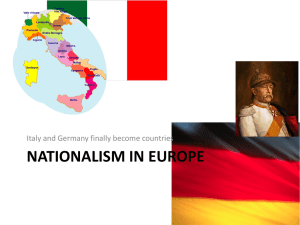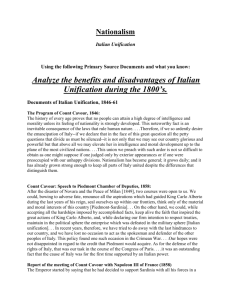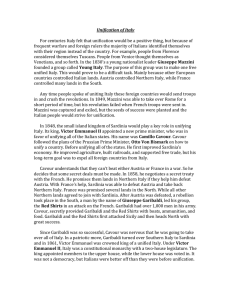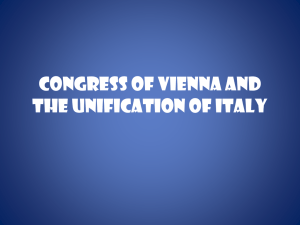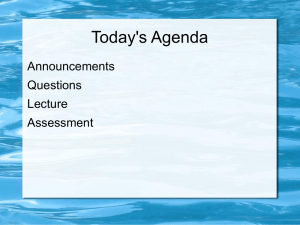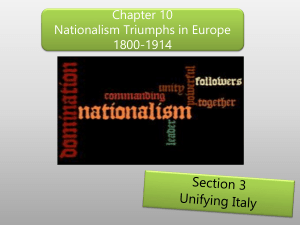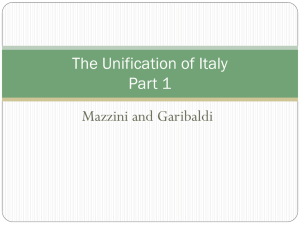Unification of Italy
advertisement
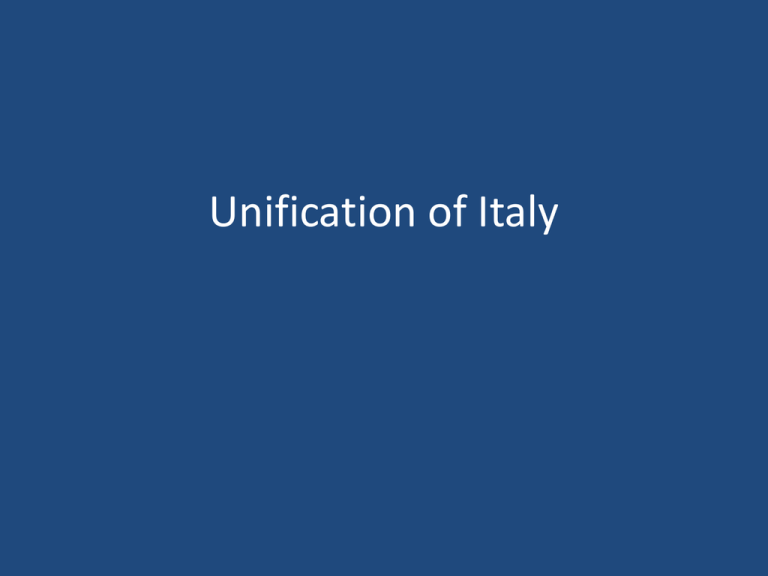
Unification of Italy Italy and Germany • Nationalism destroyed empires but resulted in building of some nations – Italy and Germany are the two biggest examples • Both areas were a hodge-podge of small kingdoms, united in language and culture but not politically • Much of the reason why is the old Holy Roman Empire and the Reformation – Conflict between Catholics and Protestants led to much of this disunity Italy • Italians were very interested in the revolutions of 1830 and 1848 • Kingdom of Piedmont-Sardinia (basically western Italy) had a liberal constitution – This appealed to middle class Italians all over the region • Young Italy movement: founded by Giuseppe Mazzini – Took “code names” from the Renaissance and Medieval times – Wanted a democratic, republican form of government – Anti-monarchy Italy • Sardinia’s King appoints Camillo di Cavour as Prime Minister • Goal: gain control over northern Italy • Obstacle: most of northern Italy controlled by Austrian Empire • Tactic: get Napoleon III of France to help drive the Austrians out – And it worked Southern Italy • Meanwhile, Cavour was secretly aiding rebels in the south of Italy • Giuseppe Garibaldi leads nationalist rebels and takes over Sicily • Red Shirts: Followers all wore red shirts, they become known by that name • Garibaldi and his troops march north, Cavour has his king meet Garibaldi in Naples, they unite the south to Sardinia • Garibaldi steps aside and lets the king rule over both parts in 1860 Camillo di Cavour Giuseppe Garibaldi King Victor Emmanuel II Venice, Rome and the Pope • Two areas remain “outside” • Austrian province of Venetia – Where Venice is located - joins Italy in 1866 • Papal States – Conquered by Garibaldi’s forces – Directly controlled by the church – Including the city of Rome Italian unification • Now all of Italy is united and controlled by one government – except for Vatican City which remains the Pope’s own kingdom Text Books Get a text book and turn to page 695 Unification of Germany • Read through the case study on the Unification of Germany • Create an outline of the information using the bold topics as your level one. • Example: Unification of Germany • Bismarck Unites Germany – Info from first paragraph • Prussia leads German Unification – Info from this section • Bismarck Takes Control – Info from this section Be sure to define any words in blue and be specific with information
